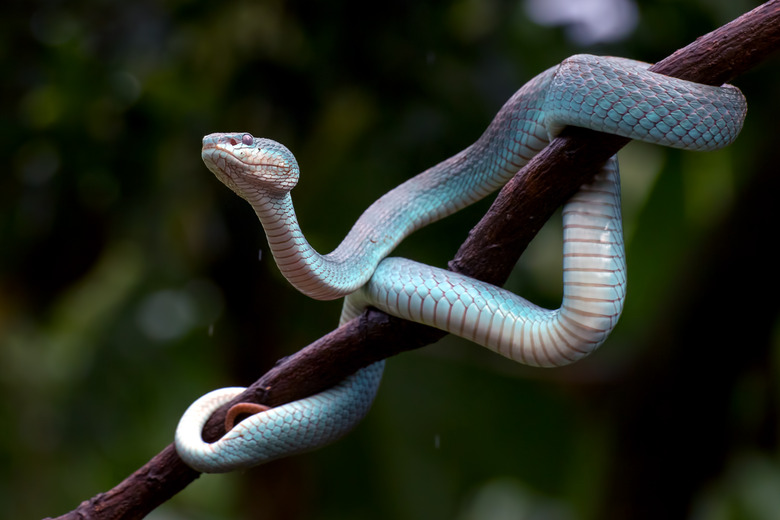Introduction
Snake bites are a significant clinical emergency situation that can take place in numerous atmospheres, especially in regions where snakes are prevalent. In Australia alone, there are numerous types of venomous serpents such as the Tiger Serpent, Eastern Brown Snake, and King Brown Serpent. Recognizing exactly how to successfully take care of snake attacks is essential for any individual that spends time outdoors or lives in rural areas. This article will discover thorough first aid management approaches for snake attacks and detail best methods for responding to these incidents.
First Help Management of Snake Bites: Ideal Practices for every single Situation
When taking care of a serpent bite, the preliminary response can substantially influence the victim's end result. Immediate activity is crucial due to the fact that quick medical treatment often identifies the extent of injury or survival price. Below are important emergency treatment principles to bear in mind:
Stay Calm: The very first step in managing a snake bite is to remain calm. Panic can raise heart rates and enhance the spread of poison throughout the body. Call for Help: Dial emergency services immediately. Offer them with your place and any type of information regarding the serpent if possible. Keep the Sufferer Still: Encourage the target to remain as still as possible. Movement can increase blood circulation, increasing venom absorption right into the bloodstream. Positioning: If feasible, place the damaged arm or leg at or below heart level. This positioning helps slow down venom spread. Remove Tight Clothing: Loosen up any clothing or fashion jewelry around the bite site; swelling might occur quickly after a serpent bite. Do Not Apply Ice/Cold Packs: In contrast to popular belief, using ice can intensify tissue damage and need to be avoided.Understanding Serpent Types and Their Habitats
Tiger Snakes and Their Habitat
Tiger snakes (Notechis scutatus) are amongst Australia's the Safety and Prevention majority of infamous poisonous snakes due to their aggressive nature and powerful venom.

- Habitat: They commonly populate coastal regions, marshes, and areas with thick greenery like marshes and swamps. Risks: Recognition of regional tiger snake habitats can decrease the danger of running into one unexpectedly.
Eastern Brown Snakes: A Significant Threat
The Eastern Brown Snake (Pseudonaja textilis) is another very venomous types discovered throughout eastern Australia.
- Habitat: This serpent flourishes in metropolitan areas, farming lands, and grasslands. Behavior: Understood for its quick strikes when endangered, comprehending its behavior may help alleviate encounters.
Recognizing Signs of Serpent Bites
Identifying symptoms early can improve possibilities of efficient treatment:
Local Symptoms:- Pain and swelling around the bite site Discoloration or bruising
- Nausea or vomiting Difficulty breathing Signs of shock (e.g., light skin, fast heart beat)
First Help Methods for Specific Serpent Bites
First Aid for Tiger Serpent Bite
In instance of a tiger snake bite:
Additional info Stay calm; maintain still. Call emergency situation services immediately. Immobilize the impacted arm or leg making use of a splint if available. Do not try to suck out poison or apply ice.First Help for Eastern Brown Snake Bite
For an eastern brown serpent bite:
Keep calmness; reassure the victim. Call emergency solutions without delay. Position them comfortably while staying clear of movement. Mark the edges of swelling with a pen when possible for observation.Creating Your Snake Bite Emergency Treatment Kit
A well-prepared emergency treatment package can make all the difference throughout emergency situations:
|Thing|Purpose|| -------------------------------|---------------------------------------------------|| Compression bandages|To debilitate arm or legs|| Sterile gauze|To cover wounds|| Antihistamines|For allergies|| Emergency contact numbers|Quick gain access to throughout situations|| User's manual|Detailed assistance on handling emergencies|
What Should You Never ever Do When Treating a Snake Bite?
Here's a listing of typical pitfalls when treating snake You can find out more attacks:
Do not use tourniquets; they can trigger more damage than good. Avoid reducing into or attempting to suck out venom from the wound. Never supply alcohol or stimulants to victims as it might exacerbate their condition.FAQs Concerning Emergency treatment Administration of Serpent Bites
1. What should I do if I see a snake?
Stay calmness and retreat slowly without sudden movements.
2. Just how do I determine if a serpent is venomous?
Research local varieties' qualities; lots of have distinctive color scheme or markings.

3. Can I use ice on a snake bite?
No, applying ice can raise cells damage.
4. How long do I have after being attacked prior to looking for medical attention?
Seek medical focus right away-- time is vital with poisonous bites!

5. Is it risk-free to drive myself to the hospital after a bite?
No! It's harmful as symptoms might worsen en route; wait for expert help.
6. Are all snakes in Australia dangerous?
No! While Australia has numerous dangerous serpents, there are likewise non-venomous types that present no threat.
Conclusion
The emergency treatment administration of snake attacks calls for timely activity incorporated with understanding concerning local species' actions and environments like those of tiger serpents and eastern brownish snakes in Australia. By following ideal practices described above-- such as staying tranquility, calling emergency situation solutions promptly, and understanding what not to do-- you considerably enhance survival possibilities after such mishaps occur.
Equipping yourself with understanding regarding different kinds of snakes in your location and preparing a proper first aid set will guarantee you prepare ought to an encounter arise-- making you far better prepared to handle this potentially serious scenario effectively!